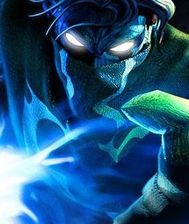
Following up on the various fresh leaks regarding Legacy of Kain: Dead Sun, Square Enix recently released a new survey to determine the future of their in-house projects. But beneath the pleas for that Final Fantasy VII HD remake (which the company seem to be saving for a rainy day), filling out the survey made me realise that - however improbable it may seem - Legacy of Kain is still potentially on their radar. With fantasy games such as Dragon Age: Inquisition and Middle-Earth: Shadow of Mordor still dominating sales worldwide, and with The Witcher III: Wild Hunt on its way, I was reminded about just how perfect the climate is for a new installment of this long dormant vampire chronicle.
Tell Me Where Else You Can Find Time-Travelling Vampires... Let's Talk Narrative.
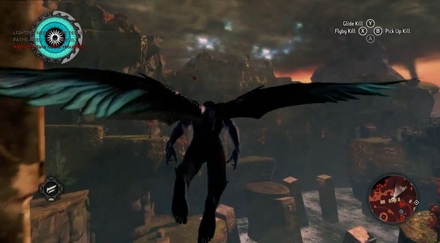 Legacy of Kain: Dead Sun - The cancelled 2012 project.
Legacy of Kain: Dead Sun - The cancelled 2012 project. Dead Sun, the cancelled LoK project from 2012, was described by its developers as 'if HBO did Zelda', which gives a very clear visual on how things work in Nosgoth, the fantasy world where LoK is set. Pivotal characters die all throughout the story, with some being resurrected later on but only to die again in a far more brutal fashion than before. The two playable protagonists of the series, Kain and later Raziel, traverse time in the subsequent games as well, shifting events of their own history around and then witnessing the catastrophic effect said changes have on the rest of the world and its characters. It's all in a desperate attempt to understand how the rules of this gothic world work, why they are actually in place and who - or, more appropriately, what - set them up in the first place. The vampire Kain ultimately wants to break the chains of fate and destiny, and he sees Raziel as being the perfect tool with which to do it. Being a wraith, and therefore an enigma to the inescapable 'Wheel of Fate', Raziel is capable of making his own decisions as he, unlike the rest of Nosgoth's inhabitants, has free will.
The complications of the series' narrative might be what eventually put Square Enix off from releasing Dead Sun, aside from the report of their estimations that it would fail to meet sales targets, which is understandable as resurrecting any old IP is risky business. But, when you think about it, it's no riskier than forging a whole new one from scratch. Square Enix has proven already as a visionary developer that it can take an old franchise, hand it to the right studio and allow new life to be lovingly breathed back into it with the right care and guidance - making it a formidable combatant in the battle for Game of the Year. I am referring specifically to their amazing work rebooting the Tomb Raider series back in 2013.
After a quite unnecessarily dragged out lifespan, the Tomb Raider franchise was in desperate need of a re-injection of energy and purpose. That year, Square Enix took a watered down old gaming series and crafted, out of its very bones, one of the most immersive, dynamic and enjoyable in-game worlds I have ever had the fortune to explore. Young, naive (also repeatedly clumsy and later genocidal) protagonist Lara Croft was immediately likeable and relatable for the first time ever, and helping her through her journey on that horrific island out in the Dragon's Triangle reintroduced me to Tomb Raider in a way I didn't think was possible. Beforehand, she had been akin to a boring super heroine, but the developers grounded her and successfully rebuilt her for the modern audience, creating an empathetic, intelligent and deeply human character for players to nurture and look after throughout the game's unyielding storyline.
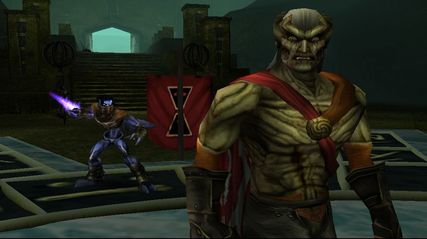 The two protagonists confront each other in Legacy of Kain: Soul Reaver 2.
The two protagonists confront each other in Legacy of Kain: Soul Reaver 2. Kain and Raziel uncover grave secrets about their world and why things have been so brutal for so long, and how one selfish creature - a scheming and tentacled colossus known only as The Elder God - could well be liable for all of it, having manipulated the peoples of Nosgoth right from the start.
How the Legacy of Kain Experience Was Ahead of its Time
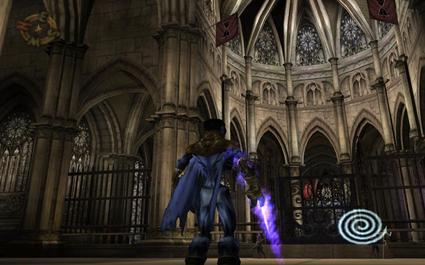 The majesty of the Material Realm...
The majesty of the Material Realm... Gaming has come a long, long way since LoK: Defiance was released in 2003, and now all of the best selling games are doing what LoK was doing back in the late nineties and early naughties, far ahead of its time. Soul Reaver led the way forward in terms of pacing, performance capture, voice acting (where all of the actors performed their scenes together, which is still not done enough in modern titles) as well as the adaptive audio programming during its intense development. The in-game music changed dependent on your location within Nosgoth, and was also dynamic in that it could detect whether or not you were in battle, and altered itself accordingly. Now these things are typical of any decent AAA title in 2015, but back then in the late nineties - on the original PlayStation no less - most of these aspects were unheard of. They were the result of a tight knit team of game developers who shared the same vision, under the guidance of series director and writer Amy Hennig (who later went onto to pour her experiences of LoK into the insanely popular Uncharted series on the PS3). Certain designers who worked on the game also claimed that the collaboration on Soul Reaver was more intense than any gaming project that had come before, with the team working in unison to perfect their shared vision for the experience despite the hardware limitations of the time, as well as the impending deadline from the publisher.
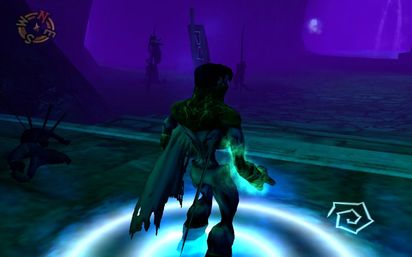 ...And the darkly twisted Spectral Realm.
...And the darkly twisted Spectral Realm. Gameplay leaks of LoK: Dead Sun reveal that the new developers had planned to reintroduce this mechanic in their new game with the advanced technology we have now, using the Spectral Realm shifting mechanics of Soul Reaver as a basis for its gameplay. Shadow of Mordor touched on it briefly too, but weaving in and out of the Living and Dead world in Mordor comes across more as a novelty than anything, and doesn't feel necessary in the end, whereas in Soul Reaver the developers made it both necessary and addictive. Its even darker iteration of Nosgoth than Blood Omen's was full of hidden gems waiting for the player to discover, such as the Human Citadel or the ruins of Nupraptor's Retreat, as well as secret abilities for Raziel to learn. You can bet that if Soul Reaver was made now, all of those secrets would have been sold separately as DLC after it was released. Speaking of which, a HD update would definitely serve to reignite interest in the series. It's somethingI've been vocal about here before.
The Benefits of Soul Reaver HD
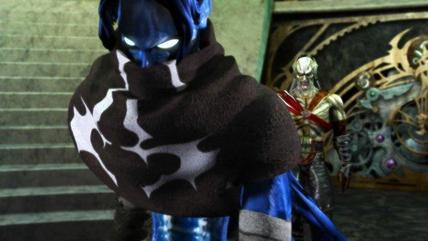 A Soul Reaver HD remake would definitely refresh interest in the series.
A Soul Reaver HD remake would definitely refresh interest in the series. With Soul Reaver's version of Nosgoth already mapped out, all it requires is care and effort in order to bring into the modern gaming world. Having replayed the game very recently through PSN I was pleasantly surprised at how accessible and easy to grasp the gameplay is, even for a game that was released in 1999. They could even update the world with a dynamic weather system, as in Tomb Raider, though Soul Reaver already featured areas of meteorological contrast (snowy mountains, barren canyons, etc...)
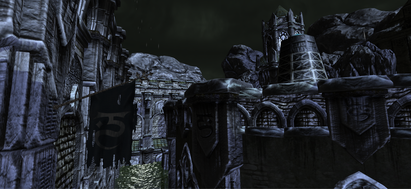 A screenshot of Soul Revenant, the fan-made Soul Reaver remake.
A screenshot of Soul Revenant, the fan-made Soul Reaver remake. 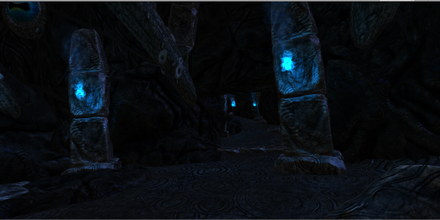 The Underworld in Soul Revenant.
The Underworld in Soul Revenant. To give you a taste of what this series is like, take a look at Soul Reaver's iconic intro sequence below! Bear in mind as well this was released on the original PlayStation in 1999.
Time to revive the Legacy?
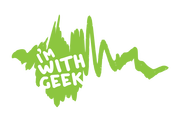
Do you think it's time for Square Enix to invest in resurrecting Legacy of Kain or any of their other dormant IPs?
Let us know in the comments below, or come find us on Facebook/Twitter!

 RSS Feed
RSS Feed
